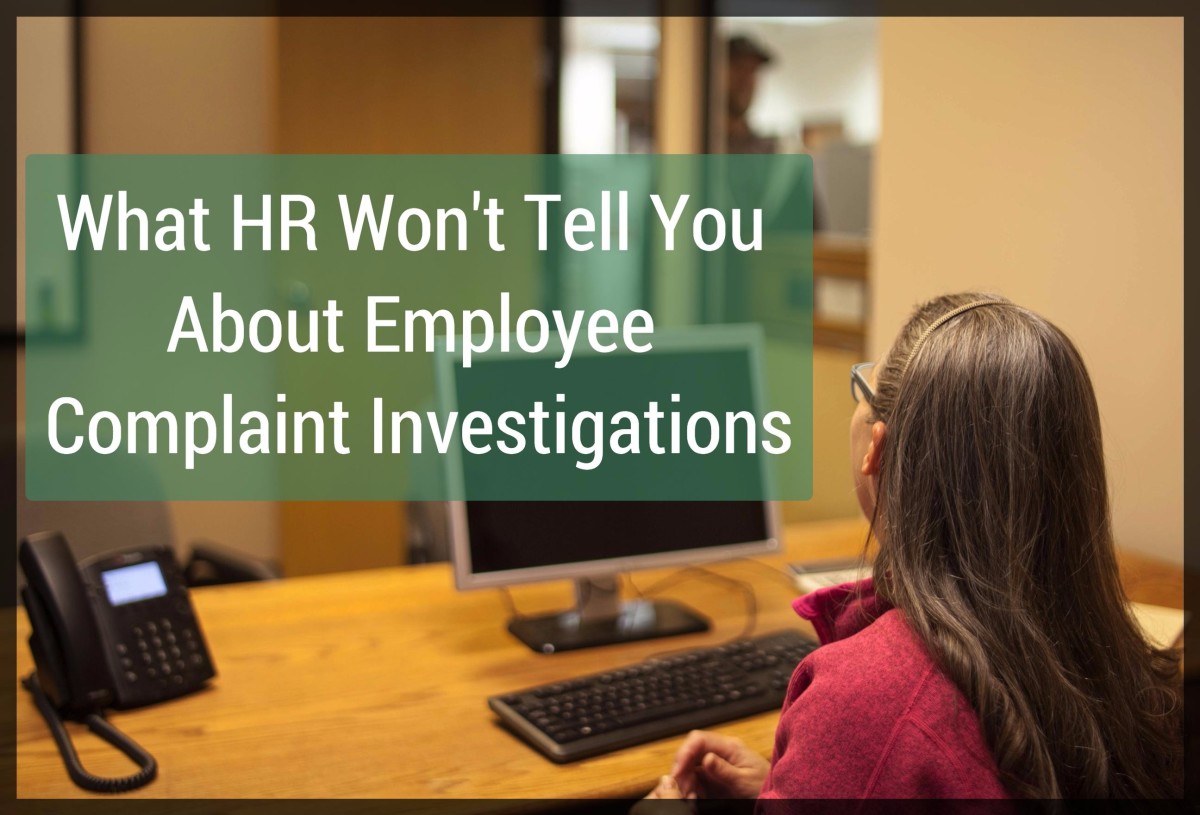Coaching techniques - One on One Employee Performance Coaching Tips
One on One Dilemma
Do you struggle with individual coaching? Does time run out before you've delivered necessary information?
I will show you how to deliver an effective 1 on 1 coaching session within 15 minutes that will leave your employee informed and ready to work with you. Notice I said with? It's a team effort - your coaching helps them do well, making you look good, win-win. Right?
I will provide dialogue for a coaching session. I will show you how I was able to turn around a bad coaching session to get positive results and improve my employees' performance.
Here are a few reasons people struggle with coaching employees.
- Some people do not take criticism very well and exhibit anger, excuses or blame. It can be difficult to approach these issues, but I'm going to show you how to take those out of the equation for most people. (Yes I said MOST. I believe some people are predisposed to argue, blame and disregard ownership, even with the best supervisor.)
- Some people cry! Crying makes many people uncomfortable for obvious reasons. It can leave a supervisor questioning their tactics and not knowing how to approach this person going forward, much less handle the current situation.
- Some supervisors take the friend approach to coaching. It's a great way to get to know someone, but frequently falls flat when the time comes for negative feedback. There has to be a balance tilted toward the professional realm. Being friendly and human is different than being friends, and who wants to have to terminate their friends? Your employee needs you to instruct them, you're friendship isn't likely to pay their bills if they lose their job.
- Dead air! This is when the supervisor isn't prepared for the coaching or allows the employee to turn the session into something different altogether.The supervisor fails to maintain control of the coaching session. Then comes the uncomfortable pause and no one knows what to say. The essential coaching has not been done and time is up.
Plan Ahead - You will love yourself for this later.
Before the coaching session: Gather any reporting data for the information you plan to deliver in one place on your desktop or in a printed report. i.e. Stats, Disciplinary Action, Other Issues, Kudos, Concerns / Feedback from client, fellow coworkers and/or senior management. Doing this helps you make the most of your valuable coaching time. I've been coached by many people who spend most of their time looking for, "that one thing."
Put the information in the simplest format possible - A one size fits all format you can use for each employee is best. Leave an area for individual comments.
If allowed by your company, put the most pertinent information in a printable format. Include a comment section for suggested improvements and/or giving kudos for great performance. This copy will be for the employee to keep at the end of the coaching session.
In the handout; include: (This is not intended to be the conversation; only what you will give the employee. We'll get to the conversation later.)
- Introduction of current standards and expectations of the company as compared to the employee's current standings.
- Any negative feedback. - Short and to the point, in easy to understand sentences.
- How can they improve? - Even if they're performing at 100% give them something to work towards. Perhaps tips for a promotion? Resume' help?
- Point out periods of good performance, if possible. - Even if it's only one day of good performance in a week.
- Write something positive - Even if you have to pull a cat out of a hat; find something positive to write about the employee's performance. i.e. "I appreciate your positive attitude", "You did well last month, I know you'll do it again!", "Your customer feedback is fantastic!", etc.
Example Circumstance: If the employee is in sales, and needs to sell 100 units by the end of the month and has only sold 10 on day 7 - showing the employee the information in a simple and informative format like the following may help:
Example Handout: This is day 7 of a 30 day cycle, you are expected to sell 100 items each month to keep in good standing. As of today, you have sold 10 items. At this rate you will have sold 40 items by the end of the cycle. Your current percentage rate to goal is 40%.Your rate during the last cycle was 30 units. In order to meet goal and avoid disciplinary action, your sales need to average 4.3 items per day for the remainder of the cycle. Your best day in this cycle was day 3 and you sold 3 items. Remember to suggest accessories to meet your goal. You have received positive feedback from 2 customers, which is fantastic.
Breaking down the employee report helps:
- It takes some weight off your shoulders during the coaching session in case the session ends too soon or something gets forgotten.
- The employee has a breakdown in their hands with obvious expectations and suggestions for improvement.
Possibly the most important part of this suggested format is the positive reinforcement at the end. It promotes a positive ending to the coaching session and motivation to continue the job after being told they are not meeting goals. Not many people perform well when they hear, "bad, bad, bad, get to work!"

15 minutes. Ready, set, Coach!
In this mock conversation, Jane is doing poorly in sales. At the rate she is performing her sales will not meet goal. She is receiving a write-up today.
Be sure to sit across from the employee. Standing over their shoulder as in the photo, is intimidating. Imagine being the girl in the photo if the man is saying something negative about her work. Placing the two of you in a non-threatening way will increase their willingness to participate in the coaching without being guarded.
1) Ask how they are and show interest.
You: "Hi Jane, how are you?"
Jane: "Oh, I'm alright"
2) Ask them a semi-personal question about something they've told you previously, or ask a general question if you don't know much about them. If you have a lot of employees, making a quick note about things they mention can help you remember topics for next time. The idea here is to make them comfortable talking to you. Give them about a minute to tell you something.
"Did you get that tooth pulled last week?"
"Ya, man it hurt for days, I don't know if I can stand to get this next one pulled, it's been aching for weeks. Have you ever had a toothache?"
3) Acknowledge what they've told you with closed statements that lead back to work. (Pick up the conversation another time, if you must.)
You: "Ouch, sounds terrible. Yes I have had a toothache and no one likes them. Don't forget to let me know if you're going to be taking time off to get it pulled, ok?"
Jane: "Ok, I will, but it's going to be a couple of weeks because I don't have the money right now. It's so expensive. Do you know a cheap dentist?"
You: "I'll give you the name of my dentist later so you can call them, but speaking of money; we'd better do some work."
Jane: "Ha, ha. Ok."
Move into the actual coaching.
You: "Here are your current standings, I'll give you a minute to look over them."
Give them a minute to look over their performance report, without saying anything. (You'll be surprised how many people will tell you their weak points. This saves you time and from looking like the critic.)
For the purposes of this lesson, let's assume the do not offer their weak points.
Ask what they believe their strong points are and why they believe they do well in that area. Look for ways to apply this to their weaknesses.
You: "Jane, what do you think your strong points are?"
Jane: "My customer feedback is really good. That means they like me."
You: "You are easy to talk to and customers feel comfortable with you."
Jane: "Ya, that's pretty cool. Sometimes they will talk forever and I can't get them to stop." <BINGO, she doesn't know how to end a conversation, thus is unable to get enough customers to make sales, because she spends so much time on each one.>
Using her own statement, you now have the catalyst for her poor sales. You won't even have to directly say she performs badly in a particular area. Watch and see.
You: "Have you considered giving closed statements when replying to your customer?"
Jane: "What do you mean?"
Give them tools to improve before delivering the disciplinary action. This prevents the moment of, "I don't know how to fix it," which can be overwhelming.
You: "Remember the dentist conversation earlier? I could have gone on and on about my last dental experience. Instead, I showed you I listened and cared about your situation, but I have to deliver this coaching to you so I turned your statement about having to save the money back toward work."
Jane: "Oh ya!" <Look at you giving her another reason to know you listen and care!>
You: "Can you see how you would move through customers a little faster and still be considerate, using that method?"
Jane: "Wow, I never thought about that."
You: "I will get some information about improving on closed statements and give them to you after lunch."
Deliver the disciplinary action.
You: "Do you know the company standard for sales?" <Now's the time to make sure they know; taking away the possibility for the excuse, "I didn't know." >
Jane: "Uh huh."
The delivery statement needs to end with the positive. It won't guarantee you won't get a earful, but it reminds them they still have a chance to improve.
You: "I'm giving you a warning for your performance, but I believe with closed statements, you'll be able to improve rapidly.
Anger, blame and lacking ownership. Unless this becomes a complete personal, disruptive or vulgar attack, let them say their piece.
Jane: "Oh, I didn't realize it was that bad. I can't believe I'm getting written up just because I have one bad month. Joe is always late and I'm always doing his work. Maybe if he showed up on time, I'd have more time to get my own stuff done. Maybe you should tell him to show up on time or hire someone else."
She just gave it all to you in one giant statement, but that's ok.
Don't engage in this conversation. Remain professional and neutral, even if you feel insulted. Not many people take being written up well and often regret their responses later.
You: "With what we've discussed today, you have an opportunity to improve. I feel you can do this."
Dead air -
End the coaching positively, wrapping it up back to the beginning and including something motivating.
You: "I've printed a copy of your latest results for you to keep. You'll notice, I've already notated your file giving you kudos for being a great team player. You're extra work has not gone unnoticed."
Jane: "Wow! (she feels a little baffled right now, because you wrote this before the meeting and she thought you hadn't noticed.)
You: "Don't forget to let me know if you need to take time off for the dentist appointment. I don't want you to be in pain for too long."
Jane: "It's been too long already, this thing is driving me crazy!"
You: "I can imagine. Looks like we're out of time for today, but I look forward to talking to you next week to see how the closed statements work. I know you're going to take this idea and run with it."
Yay! You've done it.
You've delivered the coaching in 15 minutes, maybe less and you've delivered important feedback, disciplinary action and brought the employee back to a normal realm so they can go back to work immediately with your suggestions to improve.
Make your notes for next week's coaching session right away if possible.
Don't forget to give her the information about closed statements after lunch. Keeping your end of the deal is a must.
- How are those closed statements working?
- Watch for extended conversations with customers. Give pointers throughout the week.
- Thank her for taking up slack during the week.
There are many ways to wrap the coaching, moving from positive to negative and back to positive. You will need to apply them in a way that supports your company needs and each individual employee.
Thank you for reading. Have a fantastic day!









